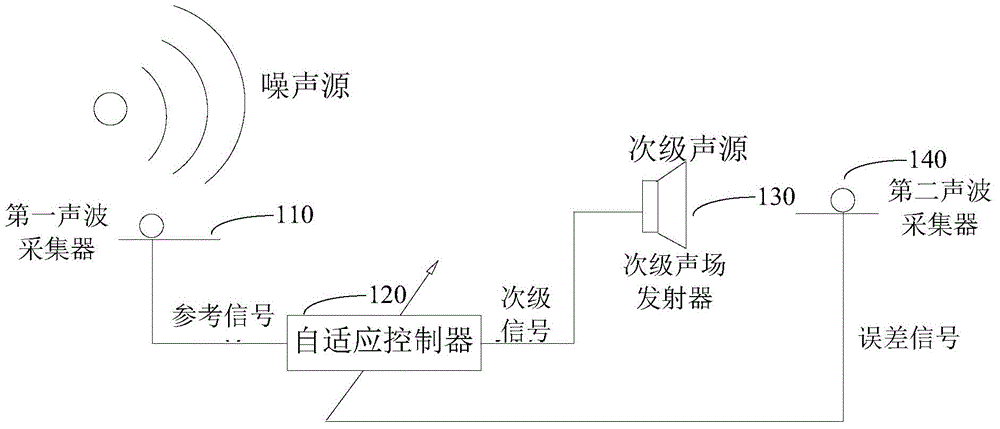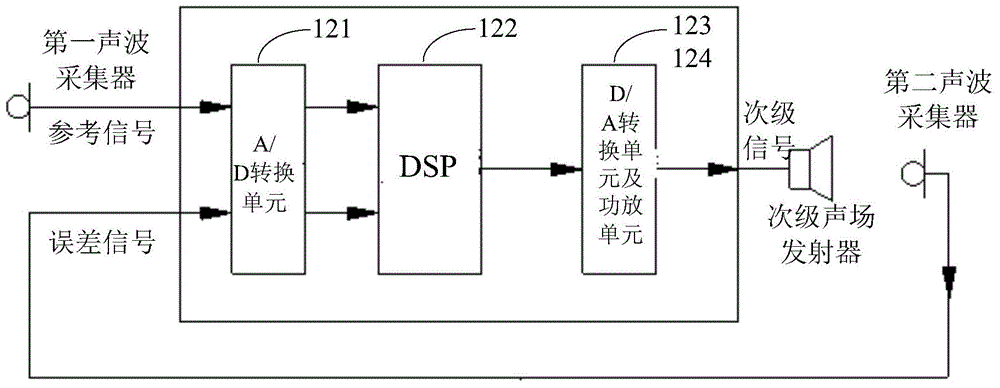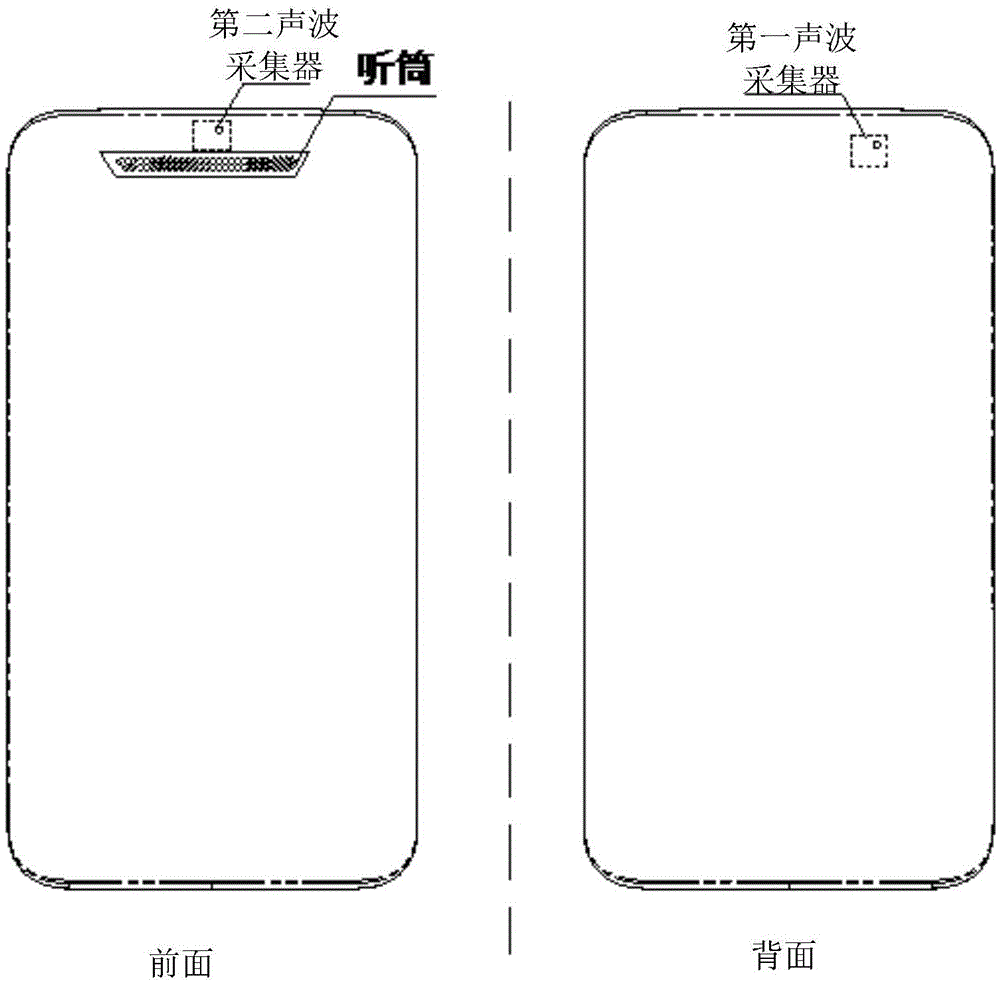Downlink active noise reduction device and method, and mobile terminal
A mobile terminal and active noise reduction technology, which is applied in the field of communication, can solve the problems of not being able to filter out the noise of local calls and affect the quality of calls, and achieve the effect of improving the reception effect of local calls and having a good market prospect
- Summary
- Abstract
- Description
- Claims
- Application Information
AI Technical Summary
Problems solved by technology
Method used
Image
Examples
Embodiment 1
[0040] An embodiment of the present invention provides a downlink active noise reduction device, such as figure 1 As shown, the device specifically includes:
[0041] The first acoustic wave collector 110 is configured to collect environmental noise signals, obtain a reference signal, and output the reference signal to the adaptive controller 120;
[0042] An adaptive controller 120, configured to calculate a secondary signal for implementing acoustic wave cancellation based on the received reference signal, and adjust the amplitude and phase of the secondary signal forward or reverse based on the received error signal;
[0043] Among them, the calculated secondary signal used to implement acoustic wave cancellation ideally refers to the signal after the phase of the reference signal is flipped by 180 degrees. The phase information of the signal is corrected, and the corrected signal is the calculated secondary signal.
[0044] Further, whether the adaptive controller 120 ad...
Embodiment 2
[0059] An embodiment of the present invention provides a mobile terminal, where the mobile terminal is integrated with the downlink active noise reduction device described in Embodiment 1. Since the structure of the downlink active noise reduction device has been described in detail in Embodiment 1, the integrated structure will not be repeated in this embodiment.
[0060] In order to better integrate the downlink active noise reduction device with the mobile terminal, this embodiment also provides the arrangement positions of the integrated first sound wave collector, the second sound wave collector and the secondary sound field emitter. Specifically, as image 3 As shown, the first sound wave collector is arranged on the back of the mobile terminal; the secondary sound field emitter is the earpiece of the mobile terminal; the second sound wave collector is arranged near the earpiece of the mobile terminal.
[0061] Wherein, the deployment principle of the first sound wave c...
Embodiment 3
[0082] An embodiment of the present invention provides a downlink active noise reduction method, such as Figure 4 shown, including:
[0083] Step S401, collecting environmental noise signals to obtain reference signals;
[0084] Preferably, before this step, it also includes: detecting whether the current environmental noise reaches the set threshold, if so, continue to execute step S401; otherwise, determine that no noise reduction processing is currently required, and end.
[0085] Step S402, based on the reference signal, calculating a secondary signal for implementing acoustic wave cancellation;
[0086] Step S403, using the currently obtained error signal to adjust the amplitude and phase of the secondary signal forward or reverse;
[0087] Step S404, sending out the adjusted secondary signal in the form of sound waves.
[0088] Step S405, collecting the environmental noise signal and the secondary signal in the form of sound waves, superimposing the two to obtain an ...
PUM
 Login to View More
Login to View More Abstract
Description
Claims
Application Information
 Login to View More
Login to View More - R&D
- Intellectual Property
- Life Sciences
- Materials
- Tech Scout
- Unparalleled Data Quality
- Higher Quality Content
- 60% Fewer Hallucinations
Browse by: Latest US Patents, China's latest patents, Technical Efficacy Thesaurus, Application Domain, Technology Topic, Popular Technical Reports.
© 2025 PatSnap. All rights reserved.Legal|Privacy policy|Modern Slavery Act Transparency Statement|Sitemap|About US| Contact US: help@patsnap.com



